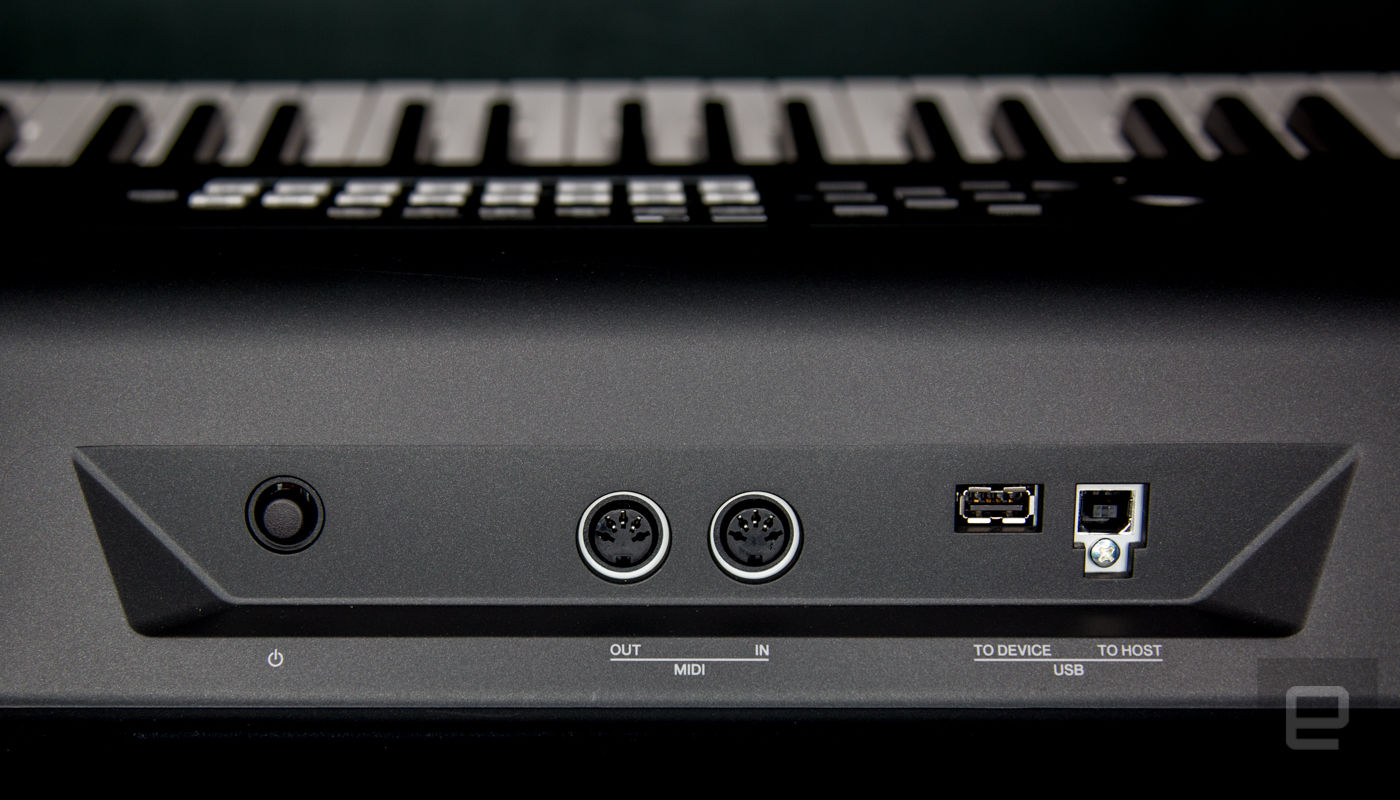I hate, hate, hate computers and phones/tablets on stage. To me, a Macbook sitting next to a keyboardist or percussionist is just asking for trouble. Computers freeze, apps crash and sometimes you forget to turn off notifications and now everyone in the audience knows you got a new Facebook message. And frankly, they’re not very “rock and roll.” So imagine my surprise when, while using the Yamaha MX88 keyboard, I found myself launching the FM Essential companion app — on my iPhone!
Gallery: Yamaha MX88 keyboard | 8 Photos
The $1,299 (You’ll really only pay $999) MX88 is the latest member of Yamaha’s entry-level MX lineup. But the keyboard’s sounds and weighted key action are that of far more expensive synthesizers. The instrument ships with over 1,000 voices (instrument sounds) from the company’s more expensive Motif series of keyboards. Quantity is great, but quality is far more important for a musician and the MX88 delivers with its piano and organ recreations.
It’s also nice that the polyphonic instrument can handle 128 simultaneous notes. It allows you can layer sound after sound to the keys and never worry about losing any of the notes.
But if you insist on playing the synth with your fingers, the weighted keys are a delight for an instrument in this price range. The action is quick and gives the player more control over the dynamics of a note when the key is hit.

The controls on the keyboard are straight forward with a small display for voices and more complex control over the synth. The more readily used features like voice manipulation, keyboard splitting, and top level sound menus are all available via a knob or button on the face of the MX88. But there’s also that app.
The FM Essentials companion mobile app, on its surface, is an adequate facsimile of a synth with a tiny keyboard and various voices. It ships with drum loops so your creations have a back beat. But it’s when you plug it into the MX88 that you see the real value. With it, you can control the voices on the keyboard and manipulate them with the on-screen oscilloscope (a visual reference of the waveform). That’s where the fun comes in.
I was able to take normal voices, flip on the arpeggio, adjust the options like cut off, resonance, modulation and make them my own right in the app and much quicker than I could on the keyboard. Plus, once I was done with that, I could play music from my iPhone directly though the keyboard via the same USB port. So I could accompany something I had recorded earlier, or play along to my favorite song.

The only drawback is that you have to buy Apple’s $30 Lightning to USB camera adapter cable to get it to work. You can’t just plug into the device USB slot (which seems like where you would plug in your phone). Instead you have to use the host USB slot.
Whether or not I would use this setup live is still debatable. iPhone apps crash just as often as computer applications. But, it has made me a believer than when done correctly, connecting your instrument to a computer isn’t that horrible and in the case of the MX88, actually enhances the experience of an already wonderful synthesizer.








